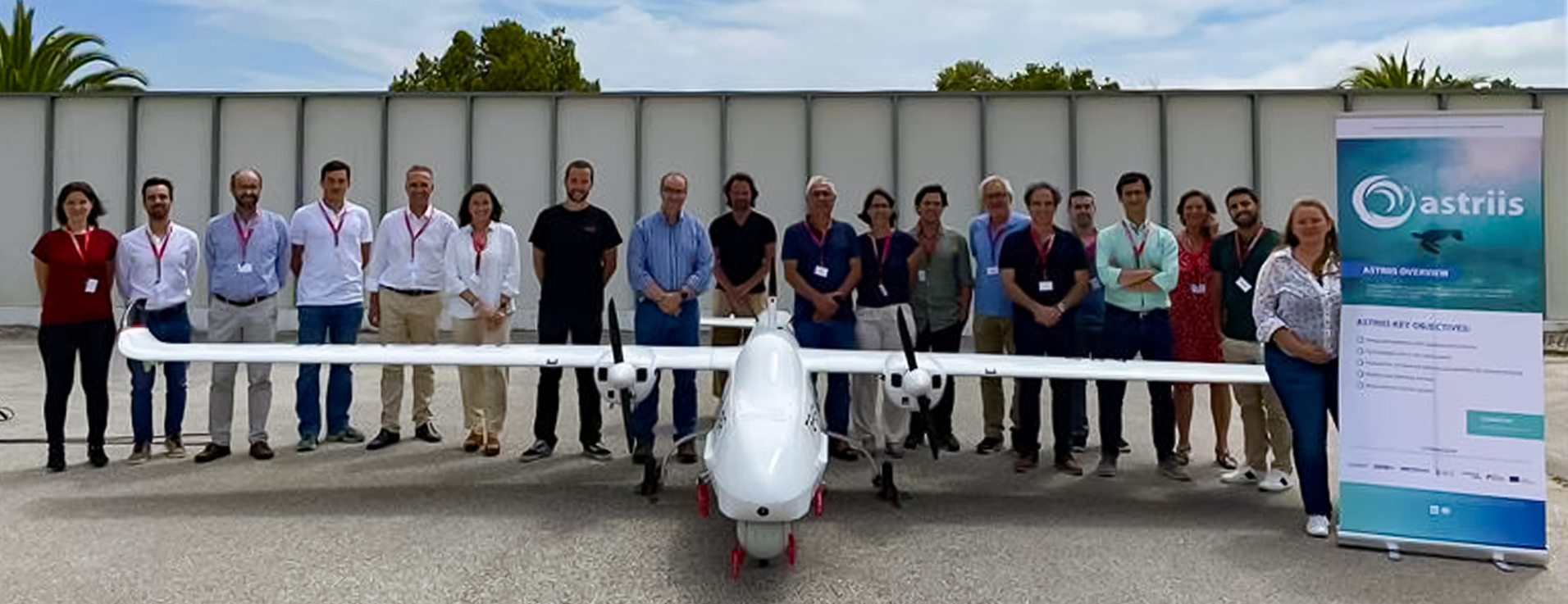ASTRIIS consortium presents results in person for the first time since Covid19
The ASTRIIS consortium met in person, in near full force, for the first time since the Covid19 outbreak. All partners sent representatives to the TEKEVER facilities near Caldas da Rainha, Portugal. Twenty people were at site, while ten others joined the event online.
During a full-day meeting, partners presented the latest results achieved, discussed various relevant scientific and technological matters, and made decisions concerning the following steps until the end of the project on 30 June 2023.
Among the various noteworthy achievements, we could highlight the progress achieved on:
- Data Platform: CEIIA, ATL, IST-MARETEC and TEKEVER described how the ASTRIIS platform is being developed, interoperability aspects and graphic user interface
- Animal Tags: CEiiA and University of Minho showed the latest developments on the marine mammals tagging equipment that allows to acquire ocean data without harming wildlife
- Multiparametric Surface Buoys: WavEC and +ATLANTIC presented an easy-to-deploy data buoy that can collect ocean data with little effort
- Seismic Data: IST-CERENA described how ASTRIIS will infer physical ocean data from seismic surveys that the oil and gas industry discards
- Aquaculture Management: CEiiA and Ocean Infinity showed a computer vision system to track and estimate the number of fish to automatically calculate the precise amount of food required for each offshore aquaculture tank
- Search & Rescue: CEiiA and +ATLANTIC introduced a buoy/AUV prototype to locate people lost at sea and send a request for rescue
- Oil Spill Monitoring: IST-MARETEC showed how ASTRIIS modelling technologies can predict oil spill propagation and support manned and unmanned operations at sea. TEKEVER presented results of a study performed with a Synthetic Aperture Radar (SAR) and how this technology could be used for detection of oil spills.
- Environmental Monitoring: SPINWORKS presented a hyperspectral sensor coupled with a thermal camera, allowing monitoring of numerous environmental factors like for instance fluorescence and algae, detection of river pollution and others.
- Long-Range Communication: TEKEVER presented the improvements under developments to extend the communication link between ocean sensors operating at long distances
- Ocean Forecasts: Hidromod, IST-MARETEC and University of Algarve showed the latest developments of the project concerning numerical modelling of ocean hydrodynamics and temperature in Portuguese Economic Zone, allowing support of coast guards in search and rescue missions, monitoring of water quality and ocean forecasts.
- Multi-Robot Adaptive Sensing: OceanScan-MST and FEUP presented new automated coordination strategies for data collection at sea using teams of autonomous robots, both for coastal bottom mapping and oceanic water masses studies.
Stay tuned to the ASTRIIS website and follow us on LinkedIn for more detailed insights on each of these ongoing activities.

